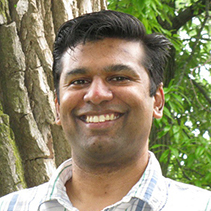We show that we can use optical radiation pressure from a weakly focused beam to ‘push’ on beads embedded in a viscoelastic medium, and isolate the dynamic displacements from each bead via optical coherence elastography. This allows us to actuate and interrogate the mechanical response from a large number of beads randomly distributed in 3D biological media.
This ability to do time-lapse volumetric mechanical microscopy in viscoelastic media has applications to the study of biophysical cell-ECM interactions, including cell forces and 3D cancer cell migration, the impact of local mechanical properties on single as well as collective cell behavior, and to monitor cell-induced ECM remodeling.
For more information see Leartprapun et al., Photonic force optical coherence elastography for three-dimensional mechanical microscopy”, Nature Communications, 9:2079, 2018.

